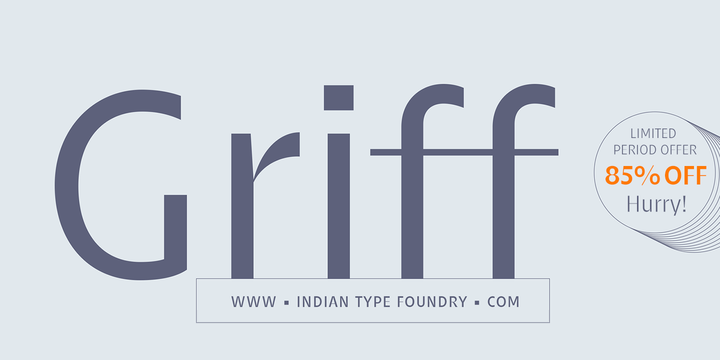
Griff is a family of sans serif typefaces with unusual stroke contrast. The ‘middle’ parts of many of the fonts’ letterforms are drawn with much thinner strokes than those found in the rest of typeface. The Griff family includes 10 styles; these are five weights that range from Light through Bold, each with an upright and italic font. The typeface is a bit humanist in style; its strokes end in horizontal or vertical cuts, rather than in diagonals. The letterforms’ counters are also mostly open. The fonts’ x-height is tall, and the lowercase letters’ ascenders rise slightly above the height of the capitals. Speaking of Griff’s capital letters, they are a bit narrower in the feeling than the lowercase. Several of Griff’s letters feature ‘vertical’ line segments that are actually slightly diagonal – in terms of draughtsmanship – which livens up text set with the fonts considerably. Griff is anything but monotonous. In its upright fonts, the ‘a’ is double-storey, while the ‘g’ is single-storey (both are single-storey in the italics). The lowercase ‘f’ has a descender in the italic fonts, too. The typeface’s diacriticals marks are streamlined in form, and they look very slick. Griff is the work of Frode Helland, a type designer from Norway. The fonts are best used in larger sizes, where their details can come clearly into view.

